|
Michael McFadyen's Scuba Diving - Mainit Bubble Springs Point, Philippines
In August 2023 I did a three week long dive trip to the Philippines with my friend John. We spent the first week at Anilao staying at Buceo Anilao Dive Resort.
There are dozens of dive sites located within 20 minutes run from the resort.
Unfortunately we had a Super Typhoon hit the northern Philippines when we were there, so the Coast Guard banned all boats and diving later in the week. This dive site was one we visited on the first day when we arrived, so the typhoon had not impacted yet but it was already a bit windy. This site was mostly protected from the wind.
Mainit Bubble Springs Point (or just Bubble Springs) is located about 1.6 kilometres from the resort around the point of the peninsula. A GPS mark for the dive spot is 13° 41' 19.320" N 120° 53' 57.527" E (using WGS84 as the datum).
 |
| A satellite photo from Google Earth that shows the location of the dive site at the top right, red marker. Buceo Anilao Resort at left. |
When we arrived at Mainit Bubble Springs Point, there were a few other dive boats there, one of the few times we had other boats near us. Unfortunately, my camera had a flat battery sure I charged it before leaving home), so I have no photographs from the dive. However, in 2025 I dived here again twice, so I have now added some photos.
 |
| A diagram of the dive site. We started above Bubbles Point, went to the bubbles then the wall and then at the end of the wall, back across the top. |
The dive site consists of a shear wall that runs for about 70 metres or so and drops from 22 to 30 metres. bommie that breaks the surface off the southern point of the peninsula. The dive boat anchors a short distance to the west of the wall in about nine metres of water.
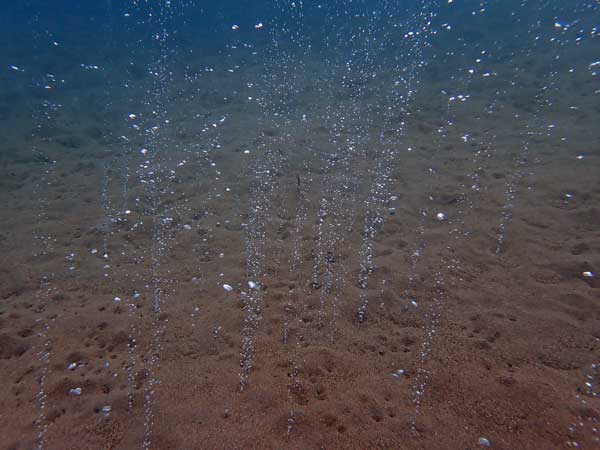 | 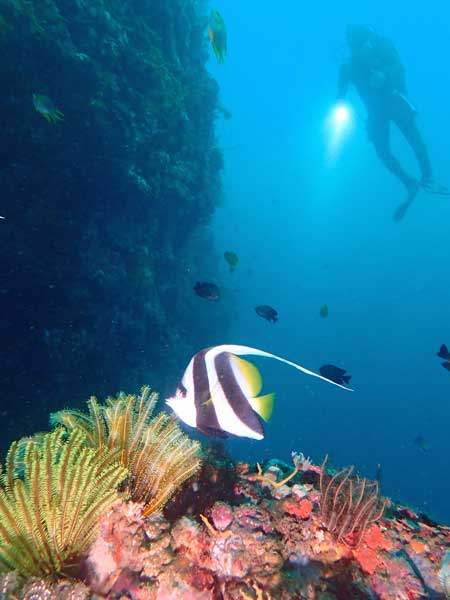 |
| The bubbles coming out of the sand | Long-finned bannerfish on the wall |
Once we enter the water we head down the slope to the east. This is where the site gets its name from. There are bubbles coming out of the sand and they are warm as is a small amount of water escaping from the sand. It is obviously from some sort of volcanic activity (there is an inactive volcano 35 kilometres to the north-west. The bubbles are quite widespread. The sand is also very warm, even hot, in some spots.
A bit further on towards the wall we see a shimmer in the water. This is very hot water coming out of the sand. I take off my glove and feel it. Right where it comes out of the ground it is far too hot to keep my hand there for more than a split second. Higher up I put my computer in the water and within a minute the temperature gauge has gone up over three degrees.
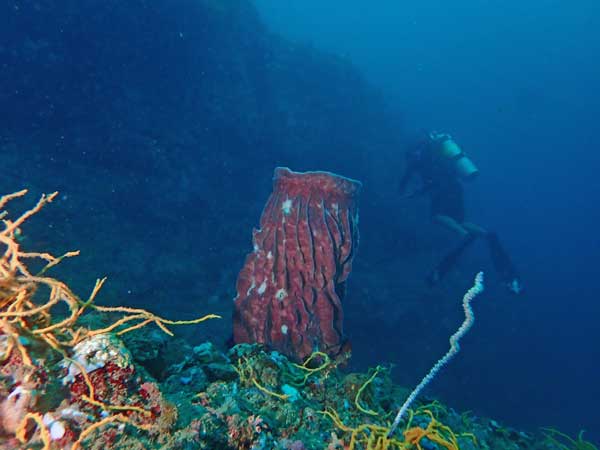 | 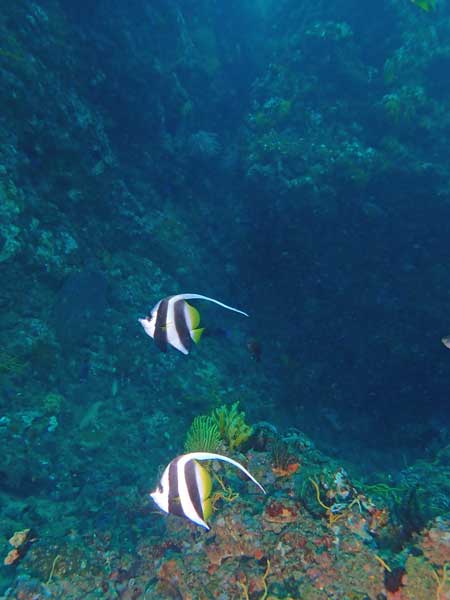 |
| A barrel sponge off the wall | More long-finned bannerfish |
From here we come to the wall which is very nice with gorgonias, sponges and sea whips on the coral. We are now at 22 metres and we drop to almost 30 metres as we go along towards the north. We see quite a few nudibranchs, a yellow-spotted boxfish and a banded-sea snake. There are plenty of different sorts of shrimps and some anemones and clownfish.
 |  |
| A batfish on the wall | A leaf fish |
After the wall ends, we come back up the sandy slope to the top of the reef at 20 metres and gradually get shallower as we head back to the boat across the top. We see more interesting things on the way.
After almost an hour, we are back under the boat for our safety stop. This was a really good dive. Water temperature was 28C in August and October but the visibility on my three dives varied from around 5 metres in the shallows to 10 to 12 metres all over and one dive almost 20 metres on the wall.
MORE PHOTOGRAPHS
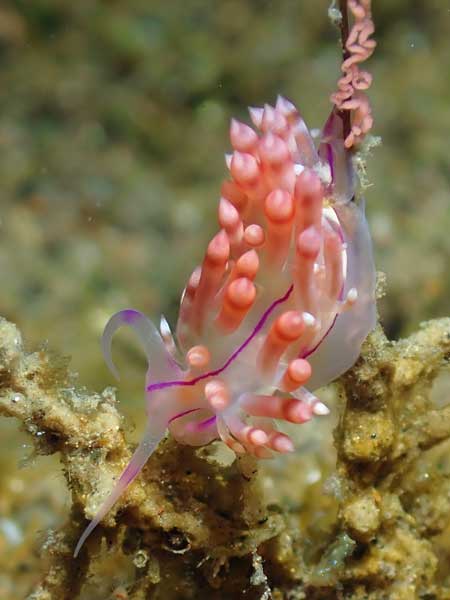 | 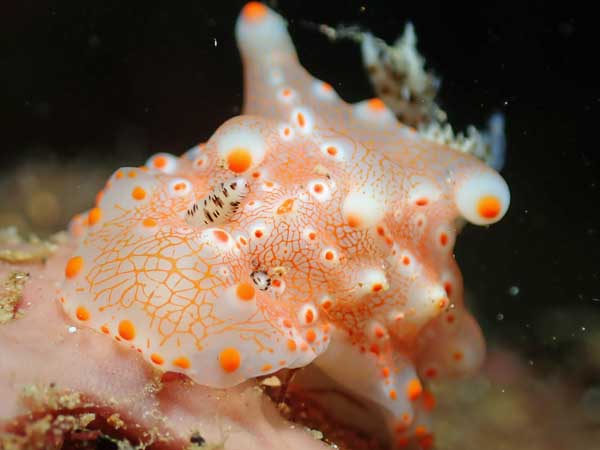 |
| |
 | 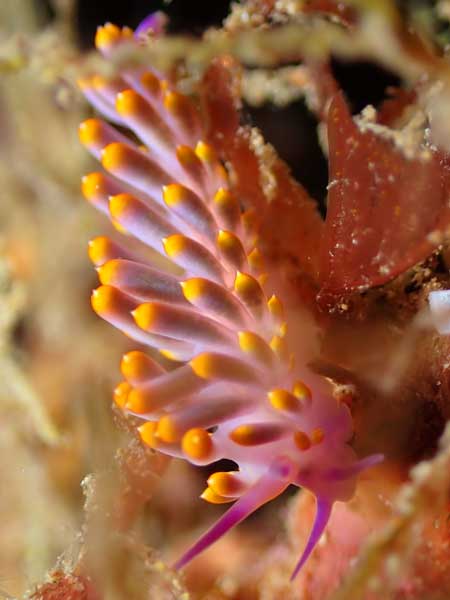 |
| |
 | 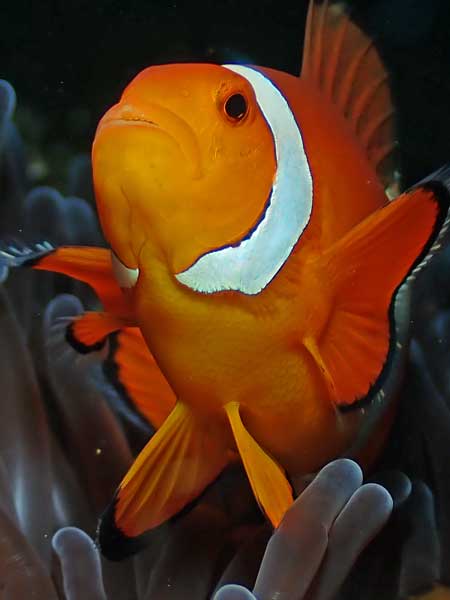 |
| A shrimp on a hydroid | Clownfish in an anemone |
 | 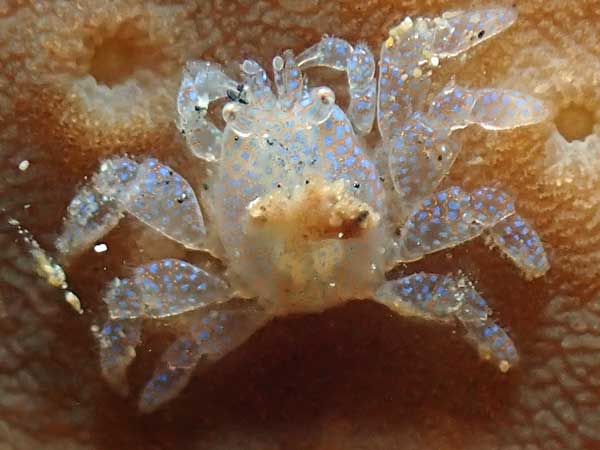 |
| A turtle in the shallows | Tiny crab on a hard coral |
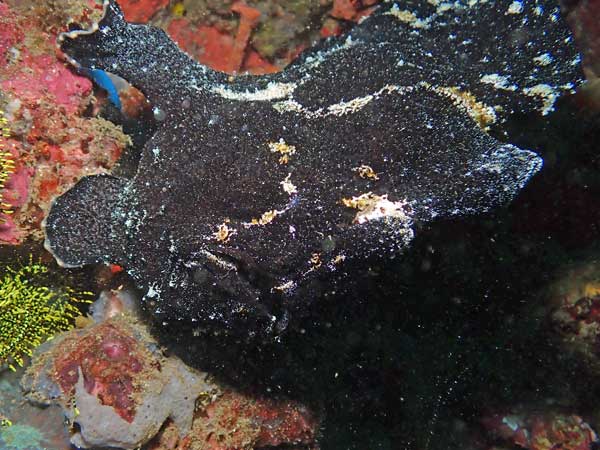 |  |
| A black giant anglerfish | Mantis shrimp with eggs |
| 
 v6.00.307 © 2003-2005
v6.00.307 © 2003-2005